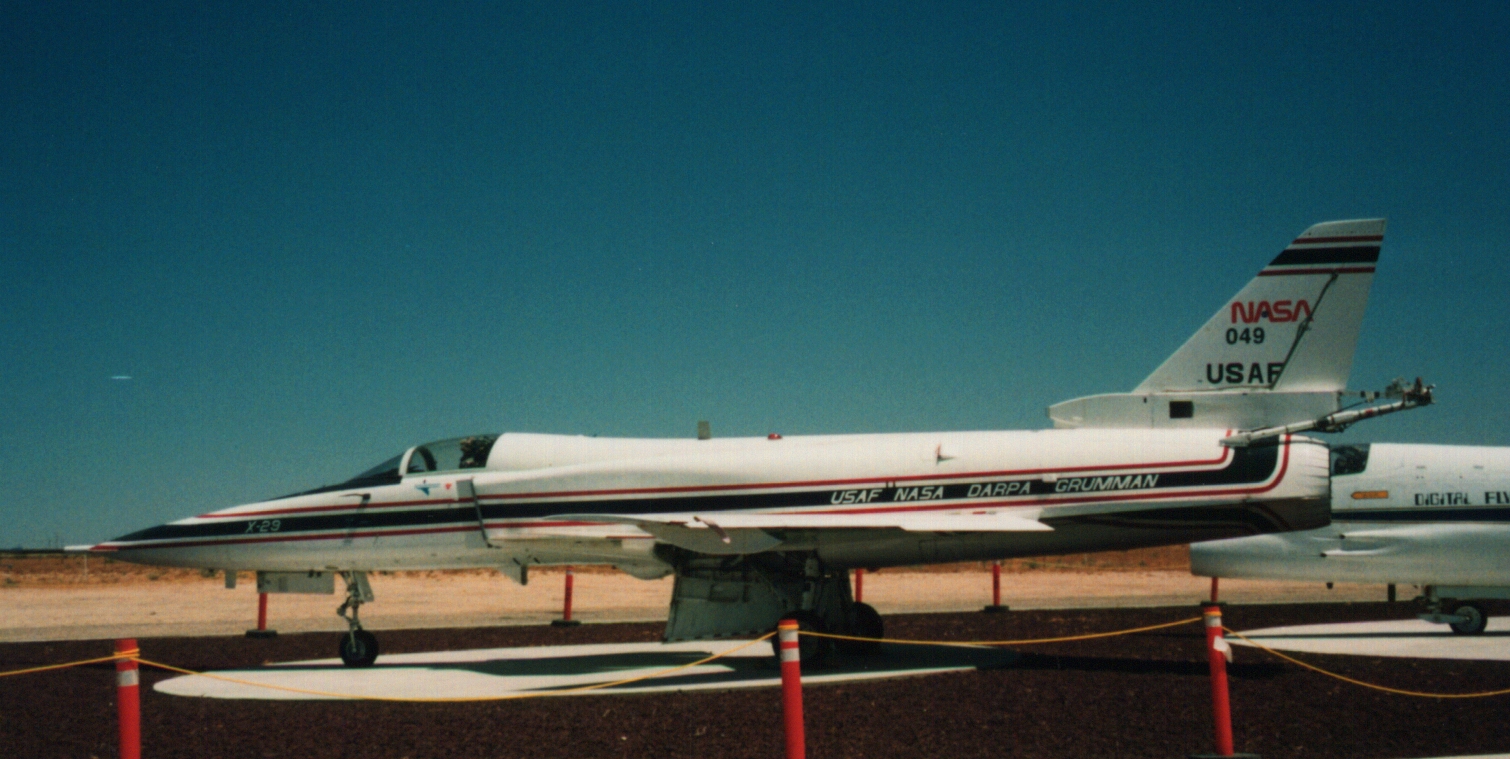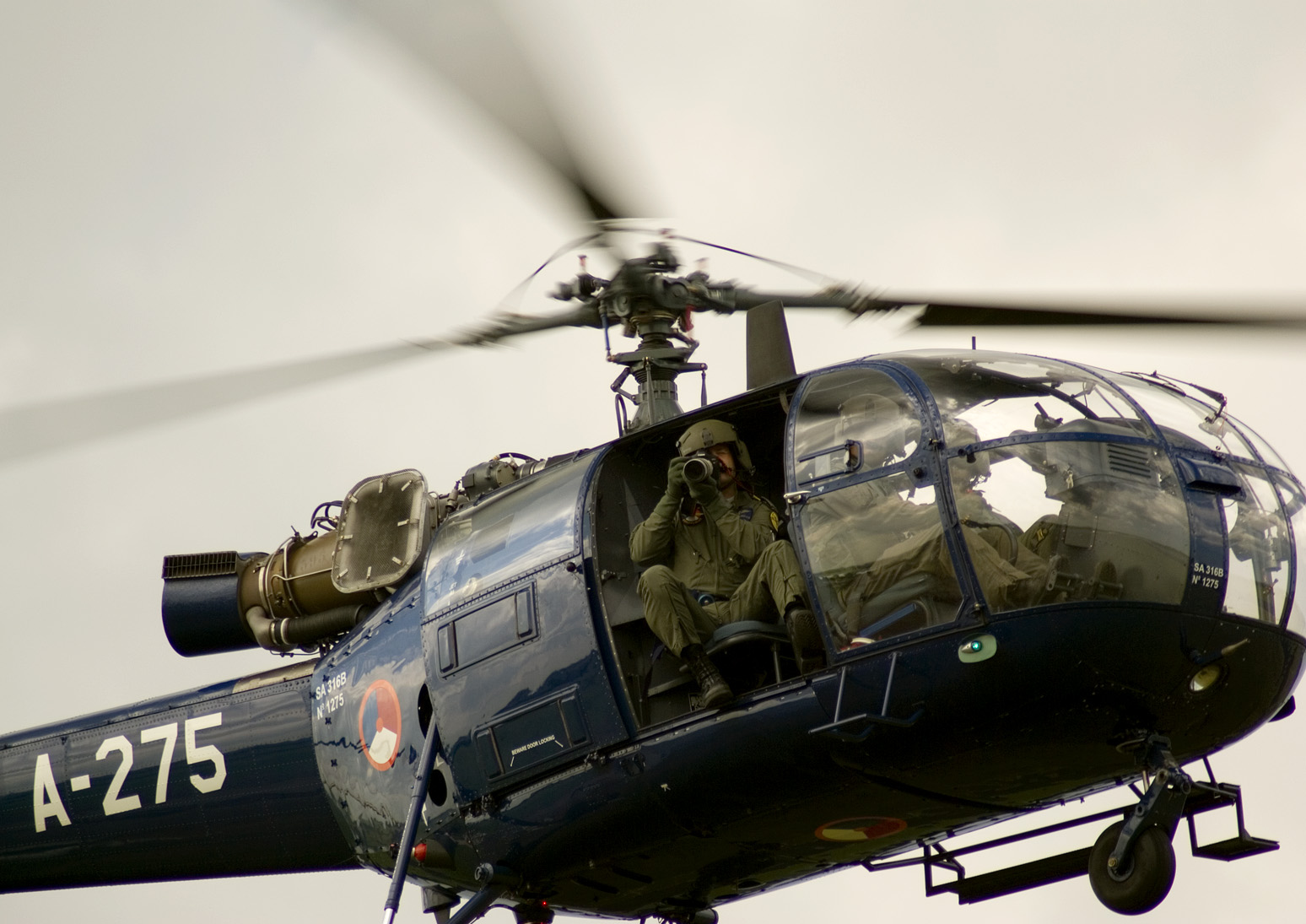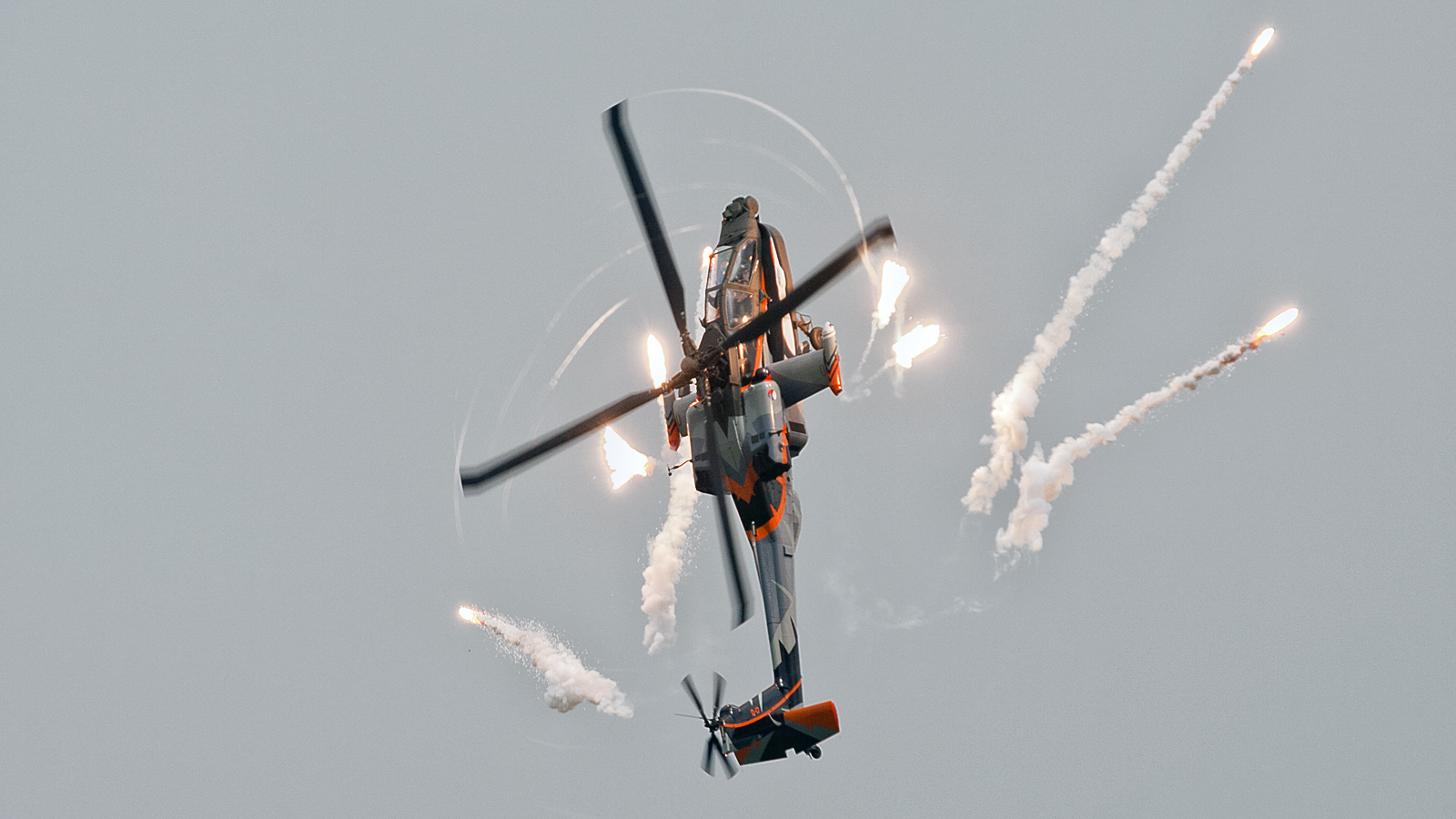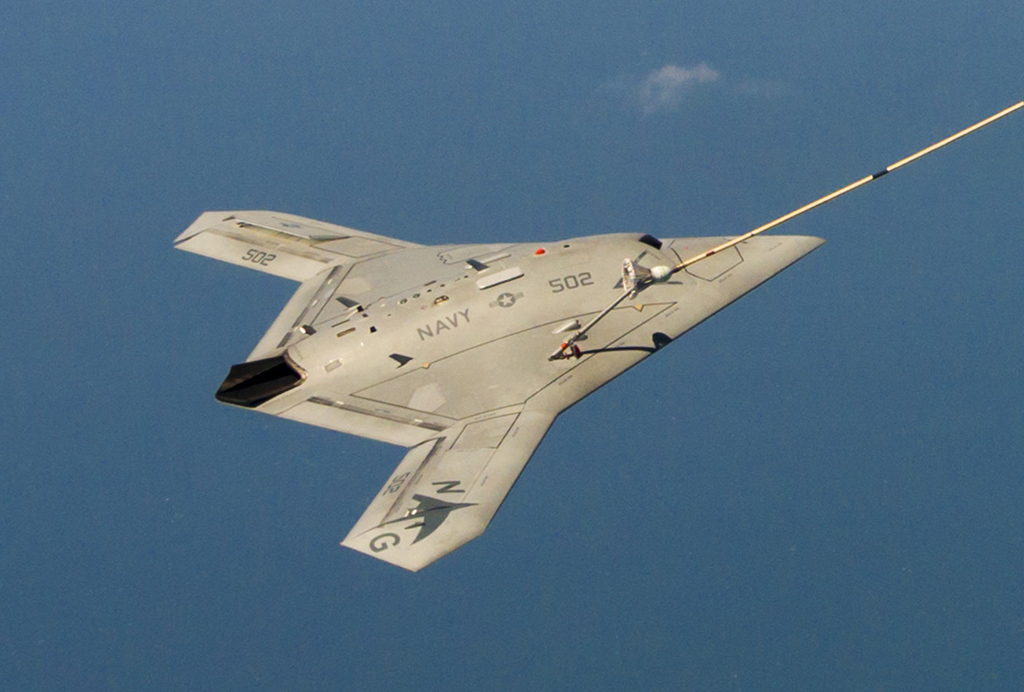
The Grumman X-29 was an experimental aircraft that tested a forward-swept wing, canard control surfaces, and other novel aircraft technologies. The multi-phased program was conducted from 1984 to 1992 and provided an engineering data base that is available in the design and development of future aircraft. Two X-29As were built by Grumman from two existing Northrop F-5A Freedom Fighter airframes (63-8372 became 82-0003 and 65-10573 became 82-0049).
Developing nation: United States of America.
Manufacturer/designer: Grumman.
Type aircraft: Experimental Fighter.
First flight: 14 December 1984 82-0003, 23 May 1989 82-0049.
Status: Retired in August 1992.
Built: 2.
The X-29 almost looked like it was flying backward. Its forward swept wings were mounted well back on the fuselage, while its canards — horizontal stabilizers to control pitch — were in front of the wings instead of on the tail. The complex geometries of the wings and canards combined to provide exceptional maneuverability, supersonic performance, and a light structure.
The flight control surfaces on the X-29 were the forward-mounted canards, which shared the lifting load with the wings and provided primary pitch control; the wing flaperons (combination flaps and ailerons), used to change wing camber and function as ailerons for roll control when used asymmetrically; and the strake flaps on each side of the rudder that augmented the canards with pitch control. The control surfaces were linked electronically to a triple-redundant digital fly-by-wire flight control system (with analog back up) that provided an artificial stability.
Phase 1 Flights
The No. 1 aircraft demonstrated in 242 research flights that, because the air moving over the forward-swept wing flowed inward, rather than outward as it does on a rearward-swept wing, the wing tips remained unstalled at the moderate angles of attack flown by X-29 No. 1. Phase 1 flights also demonstrated that the aeroelastic tailored wing did, in fact, prevent structural divergence of the wing within the flight envelope, and that the control laws and control surface effectiveness were adequate to provide artificial stability for this otherwise extremely unstable aircraft and provided good handling qualities for the pilots.
Phase 2 Flights
The No. 2 X-29 investigated the aircraft’s high angle of attack characteristics and the military utility of its forward-swept wing/canard configuration during 120 research flights. In Phase 2, flying at up to 67 degrees angle of attack (also called high alpha), the aircraft demonstrated much better control and maneuvering qualities than computational methods and simulation models had predicted. The No. 1 X-29 was limited to 21 degrees angle of attack maneuvering.
Vortex Flow Control
In 1992 the U.S. Air Force initiated a program to study the use of vortex flow control as a means of providing increased aircraft control at high angles of attack when the normal flight control systems are ineffective.
The No. 2 X-29 was modified with the installation of two high-pressure nitrogen tanks and control valves with two small nozzle jets located on the forward upper portion of the nose. The purpose of the modifications was to inject air into the vortices that flow off the nose of the aircraft at high angles of attack.
On Display
The first X-29 produced is now on display in the R&D/Flight Test Hangar at the National Museum of the United States Air Force on Wright-Patterson Air Force Base near Dayton, Ohio. The other aircraft is on display at the Dryden Flight Research Center on Edwards Air Force Base.
General characteristics
- Crew: one pilot
- Payload: 1,810 kg (4,000 lb)
- Length: 14.7 m (48 ft 1 in)
- Wingspan: 8.29 m (27 ft 2 in)
- Height: 4.26 m (14 ft 9 in)
- Wing area: 17.54 m² (188.8 ft²)
- Empty weight: 6,260 kg (13,800 lb)
- Max. takeoff weight: 8,070 kg (17,800 lb)
- Powerplant: 1 × General Electric F404 turbofan, 16,000 lbf (71.2 kN)
Performance
- Maximum speed: 1,770 km/h (1,100 mph, Mach 1.8) at 10,000 m (33,000 ft))
- Range: 560 km (350 mi)
- Service ceiling: 16,800 m (55,000 ft)
All pictures courtesy of Zijde Aviation Photo and Publishing, Rob Vogelaar


